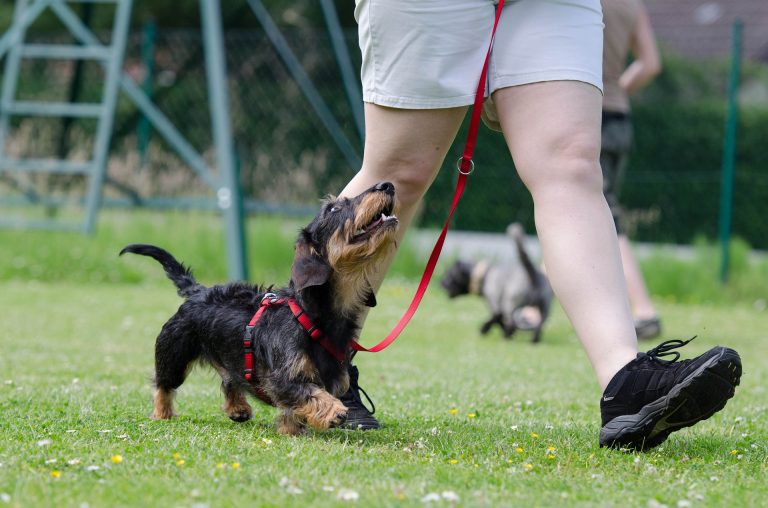
Among dog trainers, few questions are as controversial as to whether it’s better to use clickers or cue words for marking good behaviour in puppy training. There are excellent trainers on both sides of the issue, so it can be challenging for beginners to find their way through the weeds.
What’s the difference? And who is actually right?
Why Use Them At All?
Clickers and cue words are both used for the same purpose: to let the puppy know a reward is coming, usually a treat. They learn to associate the click or cue word with reward, so the trainer can eventually stop giving treats altogether.
The Benefits of Clickers For Puppy Training
Since your puppy will need to recognise the reward sound instantly, clickers can be helpful, particularly for slow learners.
Consistency!
Clickers make pretty much the exact same sound every time you use them.
Cue words, on the other hand, can have subtle variations, even if the trainer doesn’t mean for it to happen. If your cue word is “yes,” for example, you’re almost guaranteed to be more enthusiastic when your puppy does a great job and less enthusiastic when they do the bare minimum. This can actually be counterproductive, since even small differences can confuse an inexperienced pup.
Clever breeds and working pups in particular can differentiate between tone of voice, meaning you may not be progressing your training as much as you want to!
Easier To Hear Through Distractions
The sound of a clicker is sharp and polyphonic, meaning it produces sound at a wide variety of frequencies. This makes a click easy to hear even in high wind or over the sound of other noisy animals.
So, if your puppy is easily distracted and tends to ignore you when there is a lot going on, you may find a clicker helps you to ‘break through’ this noise.
The Benefits of Cue Words For Puppy Training
Cue words for marking good behaviour during puppy training can be a good choice for the same reason that they can be a bad one: variety.
Variety
Suppose you want to have your dog perform a series of commands, like “sit,” “shake,” and “roll over” in that order. You could use a clicker after each command, but eventually, you’re going to want your dog to do these things without that level of feedback. It can make it difficult long-term if they are reliant on the specific clicker sound, whereas, if your puppy is used to a variety of words, you won’t have to worry about this.
Some of the cue words you could use are…
Different Cue Words For Marking Good Behaviour
- Yes
- Good
- Nice
- Well Done
- Good Puppy (Transitions to good dog)
Mechanical Clickers
Some people don’t like the clicker noise. They feel it’s too mechanical long-term and your pup or dog doesn’t experience the joy in your voice as much if they are waiting for that sound.
Easier For You
Another advantage of cue words for marking good behaviour is that you won’t have to remember to carry a clicker with you every time you train your puppy. You always have your voice. For both of these reasons, if you have to choose between a clicker and cue words, cue words are the better choice.
The Answer: Why Not Use Both?
Fortunately, there’s no law that says you have to decide. You can always use both methods to train your puppy. Let’s be clear: consistency is important, so it’s best to use one method whenever possible, and cue words appear to be the better choice long-term.
But some dogs have a hard time learning to respond to verbal cues. This can make training difficult, and you may end up thinking the dog is just slow. Because clickers have a sharp polyphonic sound that’s always the same, they can be a better choice for these types of dogs.
Remember, the most important thing isn’t what works on paper or for somebody else’s dog; it’s finding a training method that works for you and your dog. Many people have had success starting with a clicker and then using cue words for marking good behaviour.